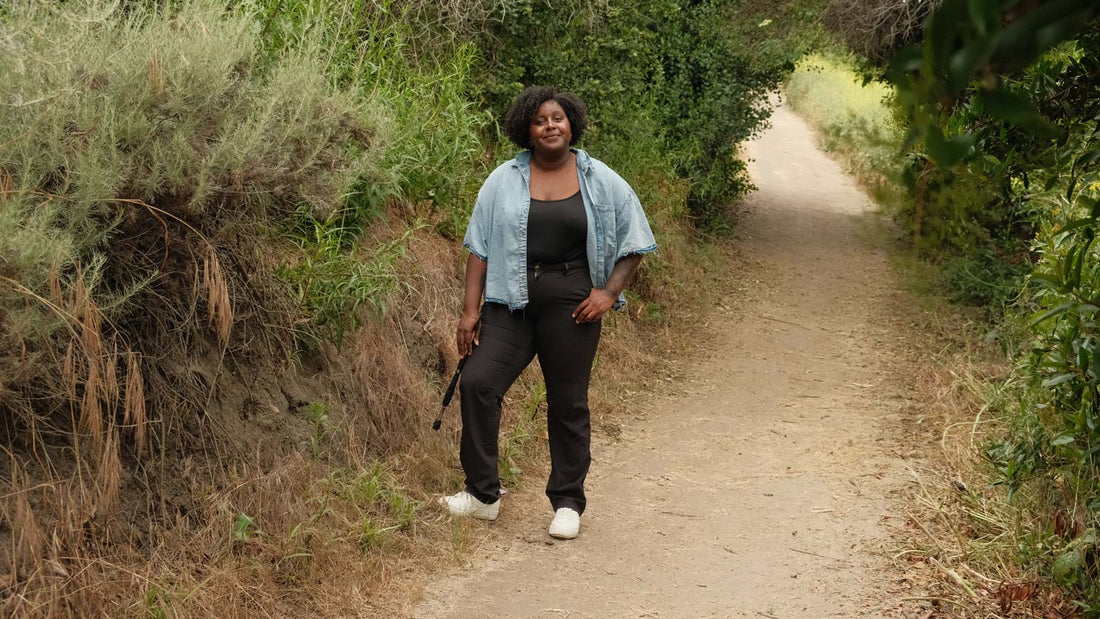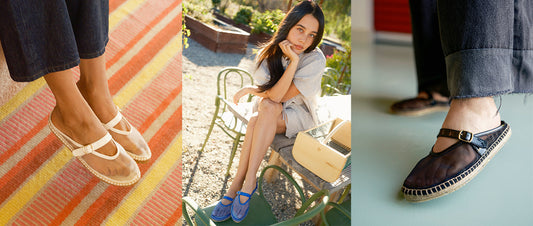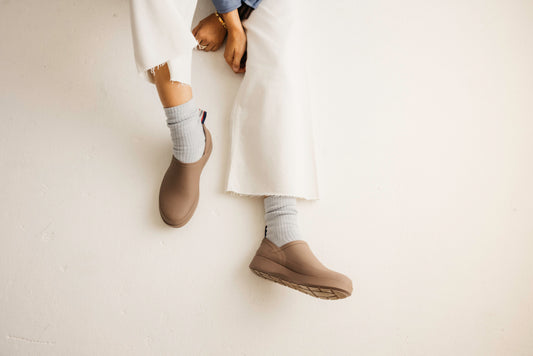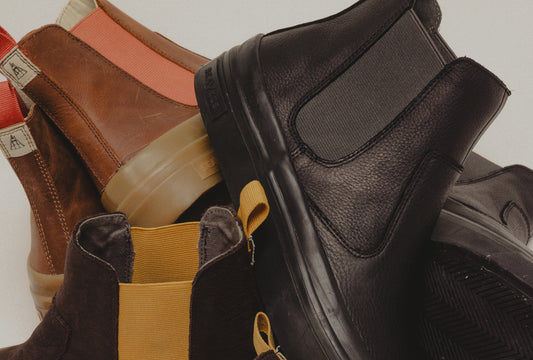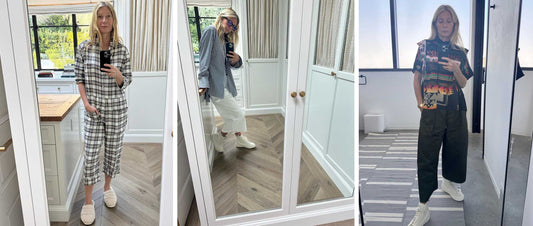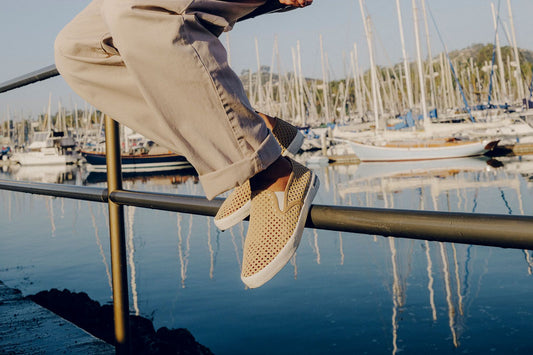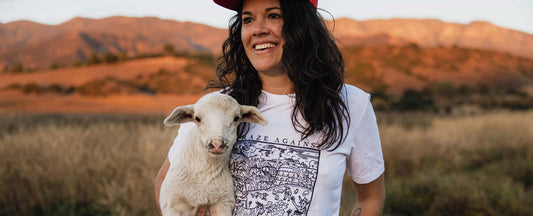We’re nearing the heart of a large swath of recreational land when Dr. Earyn McGee whips out a collapsible metal pole, affixing a tiny loop of fishing line to its tip. She calls it her “lizard lasso,” and it does exactly what you’re probably picturing right now. Only it’s a rare gloomy day in Los Angeles, and it turns out lizards are a lot like most Southern Californians—we prefer to come out when it’s sunny.
Undeterred, the herpetologist selects a green plastic lizard covered in glitter from her pack and demonstrates her technique anyway. “It’s all part of science communication,” Earyn laughs. “Sometimes you have to get creative.” While earning her PhD, Earyn merged her love for lizards and social justice into a social media game called #FindThatLizard. Every Wednesday at 7pm, she’d post a photo of a lizard in its natural environment to Twitter and participants would be tasked with spotting it themselves. The game was meant to help democratize science by bringing it to more people, and it blew up in popularity.
With her friendly nature and a passion for helping break down the barriers that can prevent Black women and girls from entering the sciences, it’s hard not to immediately pepper the Forbes 30 Under 30 awardee with our most burning lizard questions. Do all lizards have legs? What lizard does she most want to see in the wild? Does it hurt when a lizard’s tail falls off? (No, marine iguanas, probably not). We started with our biggest question instead: how does Earyn leverage creativity to strategize her success?
As told to SeaVees. Photography by Johnie Gall.


“I always knew I would work with animals. First I thought I would be a veterinarian, and then I studied birds for a while but they wake up too early for me. Lizards are more reasonable, okay? They work a regular nine-to-five like the rest of us. We love that for them, they’ve got boundaries [laughs].
“With anything in life, if you want to succeed you have to be consistent.”
During grad school I got this itch to get my name out there so that when I finally graduated maybe someone would offer me a job—being a Black woman in a predominantly white and male line of work, I often have to make my own opportunities. I was out in the field one day chasing down a lizard I had marked—it saw me and took off running but I really needed to catch it for that data point. I couldn’t find it for the life of me and was about to give up when I spotted the tiny orange marking I had painted on its back which broke up the lizard's camouflage. I took a picture and posted it to Twitter that night. The hashtag #FindThatLizard came a bit later. I think it got maybe two likes, but in my head I was onto something. With anything in life, if you want to succeed you have to be consistent, so I chose Wednesdays at 5pm to be my posting time and started uploading photos every week. I stuck with it and it gained traction.
One of the biggest things that came from #FindThatLizard was that LEGO featured me in one of their videos. They even had a mini LEGO version of me walking around—I mean, that’s a top ten life goal right there. In the video I talked about how your culture and creativity have so much influence on the kinds of questions you might ask as a scientist. But it took me a while to connect the dots in my own career.


I felt really let down by social media when I left school. I had been working on that initiative for free for so long, and I had gotten so much praise and recognition, yet the job offers weren’t exactly rolling in. I needed money to support myself and I was working for a firm that did public relations for a medtech and biotech companies, but I was miserable. What had been the point of working so hard and creating these resources that hadn’t existed before and excelling at something when there’s no money and no opportunity out there for me?
“When I reach these lifelong goals, I feel a sense of emptiness because each time I have to reexamine the question of what makes for a fulfilling life.”
So, I made opportunities for myself, once again. I started networking with other women in the sciences and made some friends who were also on the Forbes 30 Under 30 list in the science category. I navigated my professional development by engaging with people who I wouldn’t otherwise have engaged with—whereas I was disillusioned with social media in some ways, I found it pretty powerful in making connections. Eventually, I moved to Los Angeles and talked myself into a job as the Coordinator of Conservation Engagement at the LA Zoo and Botanical Gardens. I’ve only been at the job for a few months, but I have so many ideas on how to build connections between the zoo and BIPOC communities. We’re teaching people how to plant native gardens at their homes. I want to have high school students work with me to do data collection for different studies. I want to create opportunities for others where they didn’t exist before.

A question I used to get a lot during interviews is, ‘Why should we have more Black and brown people in science careers?’ And I was always like, ‘Why are you even asking that?’ But it’s because everything has to have a justification and have the research behind it, something about how if the workforce is more diverse it increases productivity. But my answer is because Black and brown people shouldn’t have been prevented from having those careers in the first place. The barriers of race and economics should never have existed. My dream is I won’t have to continue breaking down barriers, that my little sisters won’t feel the need to tear down walls. My dream for others is that they won’t need a “me.”
When I got the letter saying I was accepted into The American Association for the Advancement of Sciences If/Then ambassador program, I started dancing and jumping and causing a ruckus in my apartment. My dog was like, ‘Oh we happy? What we happy about?” [laughs]. The program is meant to aid the next generation of middle school age girls pursuing careers in STEM and through it I got to meet all these women who changed my life. I always say I’m a nerd but my friend Sam, who I met through the program, is an ultra-nerd and she wrote grants for us to attend Comic Con and create things like pop-up museums. I used to doubt myself a lot and had self-esteem issues I would work on in therapy, so feeling seen and accepted by my peers is incredible.


If there’s a downside to all of this, it’s that I don’t think I’ll ever feel like I’m doing enough. When I reach these life-long goals, I feel a sense of emptiness because each time I have to reexamine the question of what makes for a fulfilling life. The next iteration of my dream is hosting a natural history TV show. I want to make a coffee-table book of #FindThatLizard photos. I want to work with local universities in a way where I’m written into their grants to help them engage underserved communities in meaningful ways. I still daydream about so many things.
“My dream for others is that these barriers won’t exist, that they won’t need a ‘me.’”
I’m doing all the things kid Earyn wanted to do. I wanted to work with animals, to be a doctor, to change the world, and I have done that. I may not be on a world stage changing lives (give me ten years or so and I will be!), but I know every individual life I change has a butterfly effect on the world. My advice for other daydreamers is to take every opportunity that’s presented to you because you never know what lessons you’ll glean from them that you can use to your advantage later."
Earyn wears the Melrose Lug Platform and the Coronado Espadrille in Fruit Basket.

